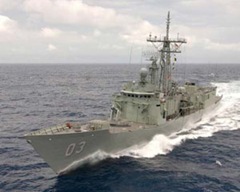You can tell a government is up a political creek without a canoe let alone a paddle.
They issue windy news releases rattling off supposed accomplishments and how much money has been being spent on a given subject, in this case fisheries issues.
They’re just fishing for public sympathy but they don’t have any bait.
What happened yesterday doesn’t mean a row of beans to the thousands affected today by the current downturn in markets for all seafood products. It sure doesn’t deal with the problems being faced by the people in the shrimp industry. Those are the people, incidentally, currently shacked up in the fisheries department headquarters in St. John’s.
The pile of words – including the lengthy backgrounder – doesn’t do much to persuade anyone the provincial government policy is tickety-boo. That’s largely because there are a host of things in the release which are pretty much meaningless or which run against what is already known in public.
Take, for instance, this line from a fisheries minister who reputedly had to cut his vacation short to pump this out:
In the midst of a difficult year, the fishing industry is resorting to suggestions of quick fixes such as subsidies which do not deal with long-term structural issues and would violate international trade agreements.
International trade agreements were no never mind back in December when the provincial government had its eye on some really lucrative hydro assets belonging to Fortis, Enel and Abitibi that it wanted for itself.
The government has tried this line before and it still rings like a ripe watermelon tossed off the Confederation Building. If one release didn’t persuade everyone, a second one isn’t likely to do much better.
Then there’s the bit right after that:
The most significant marketing challenge facing the shrimp sector is access to markets and prohibitive seafood tariffs. Today, the Honourable Danny Williams, Premier of Newfoundland and Labrador, is in Europe addressing these issues. He is also addressing the proposed European Union ban on Canadian seal products.
Now if people in the province didn’t know the federal government and every other province in the country was working on a free trade deal with the Europeans this claim and the Premier’s sudden junket might have some impact.
However, earlier this year the Premier said he wasn’t going to participate in the trade talks - where there was a high-powered chance to deal with crucial issues like the shrimp tariffs - because he didn’t trust Stephen Harper to look after the province’s interest. By not participating in the trade talks, the Premier’s solution was to leave Stephen Harper to look after the province’s interest.
Bizarre, we know, but that was his logic at the time.
Now the Premier is trying to play a little catch-up but he is in a pretty weak position. . Before heading off on this quickie trip, the Premier said - in so many words - one of his goals was to make Europeans aware of Newfoundland and Labrador. if you have to start by making people aware, you really have an uphill fight.
One of his other goals was to bring up the seal hunt. Now you don’t have to be a rocket scientist or even a high school graduate to know that bringing up the seal hunt with a bunch of people who just voted to ban it from their shores is not very likely to make them amenable to cutting a deal on shrimp tariffs or much else.
And when they already know you like to call people names – like say “hypocrites”- they really aren’t likely to want to do more than politely listen before quickly getting down to things that matter. Like say trade talks with a G8 country and all the people from it who showed up for the meetings a few months ago.
The next great accomplishment in the release is also a plum choice:
As well, the province has implemented a Fish Price Setting Panel to resolve price disputes such as the one that is occurring now. There is a mechanism in place for the harvesters to appeal the price to the panel if they are dissatisfied with the current decision. They also have the option of re-entering negotiations with seafood processors.
That would be the same pricing system that has worked so successfully in resolving the current shrimp problem. Basically, the panel hasn’t been able to find a price everyone can live with and that’s after umpteen kicks at the proverbial catfish. So far the provincial fish minister’s only effort on this aspect of the current problem has been to blame the fishermen and the processors for failing to sort out a price. Hint: that’s what the panel is supposed to do.
That makes two smacks in your own head in one paragraph. You can see a pattern developing here. There is actually a third smack: part of the overall problem in fisheries management is this whole price-fixing approach in the first place, but that’s a whole other issue.
But wait.
It gets better.
 Surely invoking the memory of fish policy made by a guy in a funny hat will persuade people that this is a government that has done much for the fishery.
Surely invoking the memory of fish policy made by a guy in a funny hat will persuade people that this is a government that has done much for the fishery.
"In 2006, we offered to purchase the marketing arm of Fishery Products International Limited for approximately $100 million. We later offered up to $5.4 million for a provincial seafood marketing council…”.
For starters, mentioning the FPI fiasco is a bit like going to Stephenville and telling them about the $15 million subsidy you offered to keep the mill open but the company didn’t accept. Your intentions don’t mean much if the offer wasn’t accepted and really doesn’t matter since the mill closed despite an unequivocal promise that the mill wouldn’t close on the Premier’s watch.
But the real sticky bit of this story is that FPI’s marketing arm only came available after what seemed like a long, protracted attack by the provincial government on that company. The Premier liked to take pot-shots at the company directors and if that wasn’t good enough, the Guy in the Funny Hat threatened a prosecution for supposed illegal processing. The whole prosecution seems to have taken an inordinate number of trips to the cabinet table – one would be too many - if some of the court documents in the case are any indication.
In the end, changes to the FPI Act actually made it easier to break up what had once been a very successful integrated fishing company with international markets.
This release is so successful at this point that its authors then try a little blame shifting, this time to the people involved in the fishing industry:
In the meantime, the industry continues to lobby the Provincial Government for additional seafood processing licences, despite their repeated calls for rationalization of the industry and despite the adverse effects that this would hold for plant workers.
Leave aside for a second the poorly constructed sentence that makes it hard to tell what it is that “this” refers to. Would issuing more processing licenses be bad for plant workers? Would rationalisation adversely affect the workers?
Let’s just note that, firstly, the provincial government alone has the jurisdiction over fish plant licensing. If they want more plants, they can license all they want. If they want fewer plants – rationalisation is the way to go, by the by – then the provincial government can create the circumstances to make this happen. They can set up the system to rationalise the number of plants and since fish plants are entirely provincial, they can put aside some oil money to pay for the “workforce reduction program.”
Secondly, it doesn’t matter a jot or a tittle what something called “the industry” wants since “the industry’ doesn’t exist as a monolith. Processors know there are too many plants. Workers know in their hearts there are too many as well. Some interests may be of a different view but – to be quite frank - the responsible rests with the licensing jurisdiction - i.e. the provincial government - to exercise its judgment.
And just to go back to the FPI thing: at a time when everyone seemed to understand that consolidation was needed to ensure for strong processors that could compete globally, the provincial government evidently thought the best thing to do was smash up the largest company and distribute its bits among a bunch of smaller operators. Even mentioning rationalisation just opens up a can of political worms for the provincial government, none of which are crawling willingly onto any hooks.
The rest of the release doesn’t get any better. At one point, the provincial government tries to claim that the industry is licensed “primarily” by the federal government. That’s despite the fact that the processing sector is entirely provincial and has the largest number of workers in it.
Go figure.
They even bring up the much talked about, much delayed and now much more costly aquaculture veterinary centre as an example of the commitment the provincial government has to the fishery. This release is a desperate effort if they have to put that chestnut out there.
The current crisis in the fishery is a real political test for an administration that has been remarkably free of such tests over the past five years. The administration hasn’t been handling it adeptly. Having the Premier and the fish minister leave town just as things were really heating up certainly didn’t help.
If this release is the best the provincial government can do in an effort to catch a political break, the fishery may well be in more trouble than it appears.
-srbp-
 With the better pictures, it is now easy to confirm that the aircraft belong to 8th Special Operations Squadron, US Air Force unit that is part of Special Operations Command.
With the better pictures, it is now easy to confirm that the aircraft belong to 8th Special Operations Squadron, US Air Force unit that is part of Special Operations Command.  Here’s a shot of the one included in last night’s update.
Here’s a shot of the one included in last night’s update.  Here’s another spectacular photo of 0028 on approach.
Here’s another spectacular photo of 0028 on approach. 










![forgetmenot[5] forgetmenot[5]](http://lh4.ggpht.com/_1JCeohwjuLE/SkqqESdMQbI/AAAAAAAAB6c/tPnZVmJLmhA/forgetmenot%5B5%5D_thumb%5B1%5D.jpg?imgmax=800)